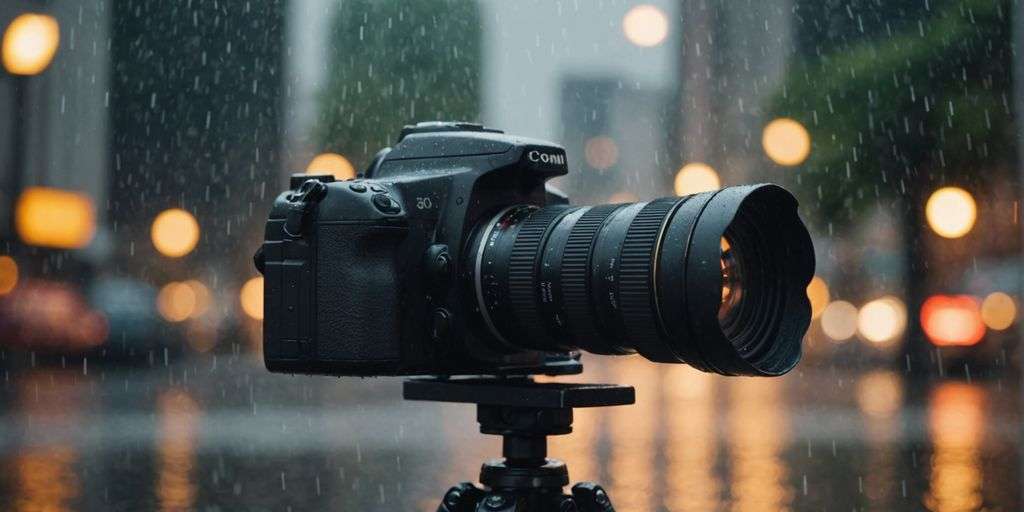The Impact of Rain and Moisture on Outdoor Cameras

Outdoor security cameras are exposed to various weather conditions that can affect their performance and lifespan. Rain and moisture are among the most common challenges these cameras face.
Preventing Water Damage
Rainwater can seep into camera components, causing short circuits and permanent damage. To prevent this, it’s essential to choose cameras with a high IP (Ingress Protection) rating. Additionally, using weatherproof enclosures and protecting cable connectors with weatherproof grommets or conduit connectors can help keep moisture out.
Dealing with Lens Obstruction
Moisture buildup on the lens can obstruct the view and impair image quality. Regularly cleaning the lens and using anti-fogging solutions can help maintain clear visibility. In areas with high humidity, consider installing cameras with built-in heaters to reduce condensation.
Choosing Waterproof Housings
Selecting the right housing is crucial for protecting your cameras from rain and moisture. Waterproof housings provide an extra layer of protection, ensuring that your cameras remain functional even in heavy rain. Look for housings made from durable materials that can withstand harsh weather conditions.
When installing outdoor cameras, it’s important to consider the local climate and choose the right equipment to ensure comprehensive surveillance and peace of mind.
How Extreme Temperatures Affect Camera Performance
Cold Weather Challenges
Cold weather can be tough on outdoor cameras. When temperatures drop, the camera’s internal parts can freeze, making it stop working. Cold can also drain the battery quickly, leaving the camera powerless. To keep cameras working in the cold, some models come with built-in heaters or special housings to keep them warm.
Heat-Related Issues
Hot weather can be just as harmful. High temperatures can cause the camera’s battery to overheat, which might damage it or even cause it to explode. The heat can also make the lenses and other parts expand, warp, or crack. Using sun shields or cameras with cooling systems can help keep them cool.
Temperature-Resistant Models
Some cameras are made to handle extreme temperatures. These special models are built to work in very hot or very cold places. They are more resistant to weather and last longer. If you live in a place with extreme weather, it might be worth investing in one of these temperature-resistant cameras.
Protecting Cameras from Snow and Ice
Anti-Freeze Solutions
In snowy or icy climates, it’s crucial to install heated enclosures or camera housings with built-in heaters. These heaters prevent snow and ice from building up on the camera’s exterior. This ensures the camera remains functional and captures clear footage. Without such protection, snow and ice can cover the lens, making it hard to record any useful video.
Snow Removal Tips
Regularly check and clean your camera to remove any snow or ice that may have accumulated. Use a soft brush or cloth to gently wipe away the snow. Avoid using sharp objects that could scratch the lens. Consistent maintenance helps in keeping the camera operational and the footage clear.
Ensuring Clear Visibility
To maintain clear visibility, consider using additional weatherproof housings. These housings shield the camera from direct exposure to snow and ice. They also help in reducing the risk of the lens getting obstructed. Regularly inspect the camera and its housing to ensure everything is in good condition.
Regular maintenance and the right protective measures can significantly extend the life of your outdoor cameras, even in harsh winter conditions.
Safeguarding Against Dust and Debris
Dustproof Camera Options
When selecting an outdoor camera, it’s crucial to consider models that offer dustproof features. Dust can accumulate on the lens and sensors, leading to poor image quality and potential overheating. Look for cameras with an IP6X rating, which ensures complete protection against dust ingress.
Regular Cleaning Practises
Maintaining your camera’s performance involves regular cleaning. Dust and dirt can settle on the lens, obstructing the view and damaging the equipment over time. Use a soft brush or air blower to remove loose particles, and gently wipe the lens with a microfibre cloth. Avoid using harsh chemicals that could harm the lens coating.
Preventing Lens Scratches
To keep your camera lens scratch-free, consider installing a protective cover. This simple addition can shield the lens from dust, debris, and potential scratches. Additionally, position your camera in a sheltered location to minimise exposure to harsh environmental elements. Regularly inspect the lens for any signs of wear and tear, and replace the cover if it becomes damaged.
Regular maintenance and the right protective measures can significantly extend the lifespan of your outdoor camera, ensuring it remains effective in capturing clear images.
Conclusion
In conclusion, keeping your outdoor security cameras in good shape despite the weather is key to maintaining a safe home or business. By choosing the right weatherproof cameras, installing them correctly, and doing regular check-ups, you can make sure they work well all year round. Remember, a little effort in protecting your cameras from rain, snow, and extreme temperatures can go a long way. So, take the time to weatherproof your cameras and enjoy peace of mind knowing your property is always under watchful eyes.
Frequently Asked Questions
What are the main weather challenges for outdoor cameras?
Outdoor cameras can face many weather-related challenges, like rain causing water damage, snow and ice freezing parts, extreme temperatures affecting how they work, and dust and debris collecting on the lens.
How can I protect my outdoor camera from rain?
To protect your camera from rain, choose a waterproof model or use a protective housing. Regularly check seals and covers to make sure water can’t get inside.
What should I do if my camera lens gets foggy?
If your camera lens gets foggy, clean it with a soft cloth and consider using anti-fog solutions. Make sure the camera is properly sealed to keep moisture out.





